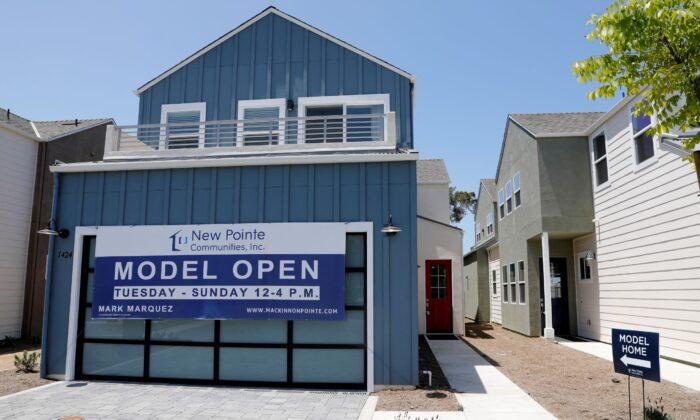Home sales across the United States fell in December for the first time in four months as higher prices and low housing stock continued to shut out first-time buyers.
First-time buyers accounted for 30 percent of sales last month, compared to 31 percent a year earlier.
The availability of existing houses fell to the lowest level in more than two decades.
Existing home sales slumped 4.6 percent to a seasonally adjusted annual rate of 6.18 million units last month, according to the National Association of Realtors in a report on Jan. 20. Economists polled by Reuters predicted that sales would fall to a rate of 6.44 million units.
However, demand for homes remains high, according to the association.
Median housing prices jumped to $358,000 in December, an increase of 15.8 percent from a year earlier. House prices averaged a record $346,900 in 2021, up 16.9 percent from 2020.
Homes sold in an average of 19 days, slightly higher than during the summer, although the number of houses for sale slumped to just 910,000 in December, the fewest since records began in 1999.
“It’s very hard for sales to meaningfully grow when there’s just not that much available to buy,” said Kwame Donaldson, senior economist for real estate website Zillow.
“Existing home sales fell back to earth in December after an unexpectedly strong autumn. ... This reversal can be traced to a dramatic decrease in options for buyers.”
The inventory of homes for sale has fallen 40 percent from pre-pandemic levels, he said.
Donaldson said that the Omicron variant may have caused a scare and discouraged sellers from putting their homes on the market, driving down inventory.
Home sales soared after the initial pandemic lockdowns ended and many Americans sought more space for home offices and for their families.
The market also was fueled by strong job and income gains.
The year 2021 was an overall healthy one for home sales, which reached a total of 6.12 million, up 8.5 percent from 2020 and the most since 2006, before the 2007–2008 housing bubble crisis.
Demand for housing is being fueled by the resale and renovation of old homes by individuals, as well as investors taking advantage of the booming housing market.
Home resales, which account for the bulk of U.S. home sales, fell 7.1 percent from 2020.
Rising mortgage rates, supply constraints, and higher house prices could make home purchases less affordable this year.
A possible move by the Federal Reserve to begin raising interest rates in March, the first increase since 2018, likely will put a dent in home sales this year, said Lawrence Yun, chief economist for the National Association of Realtors.
Mortgage rates spiked sharply in late December, after sales were mostly completed.
The expectations of higher borrowing costs likely drove up home purchases in the fall.
A major backlog of unfinished houses authorized for construction is being blamed on higher material costs and shortages, which added weeks to typical single-family construction times.
The United States nearly doubled the duties on imported Canadian softwood lumber in November to 17.9 percent from 9 percent after a review of its anti-dumping and countervailing duty orders.
Sales remained concentrated in the higher-price end of the market.






Friends Read Free